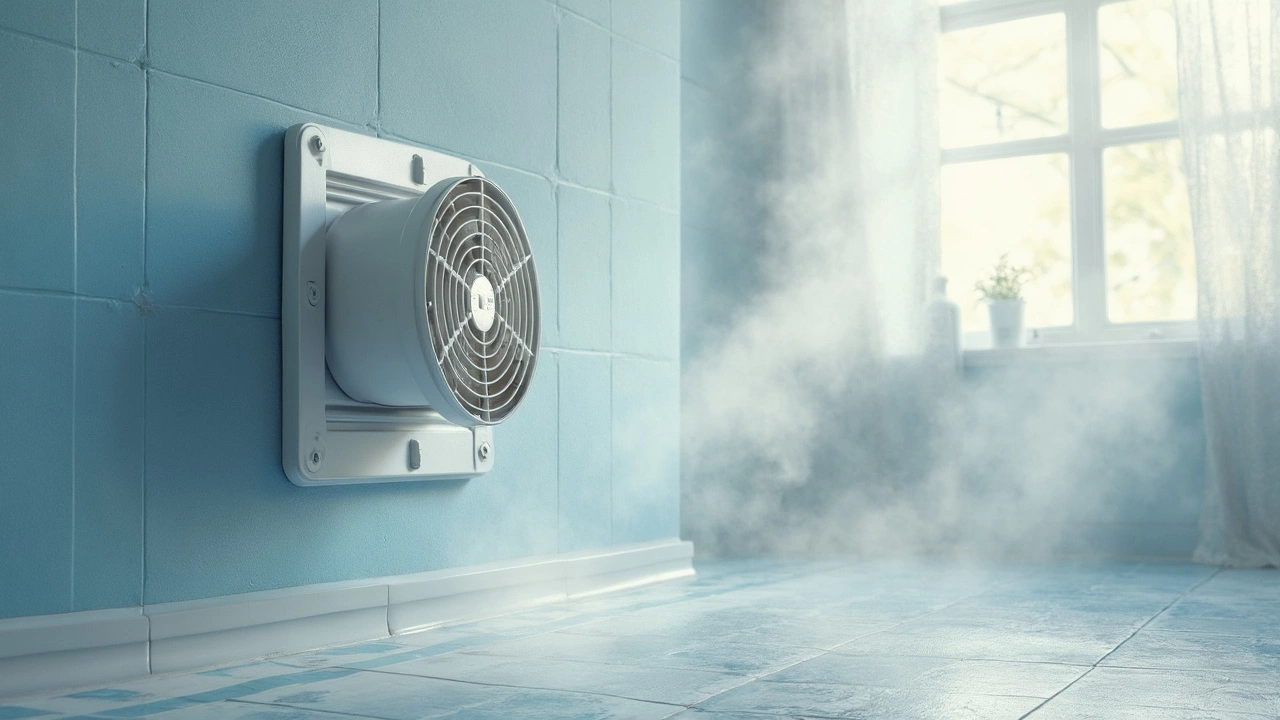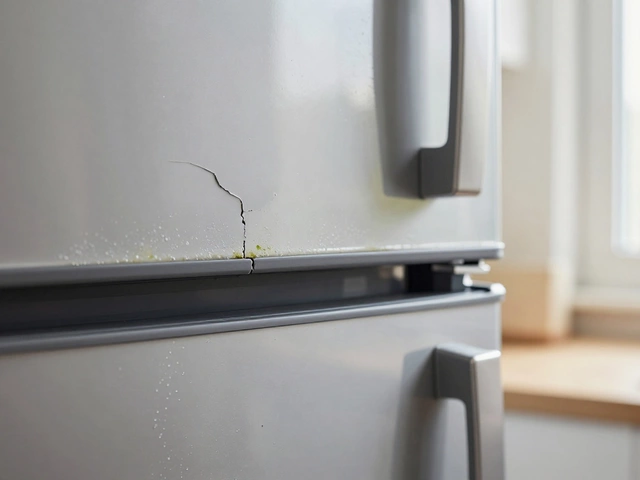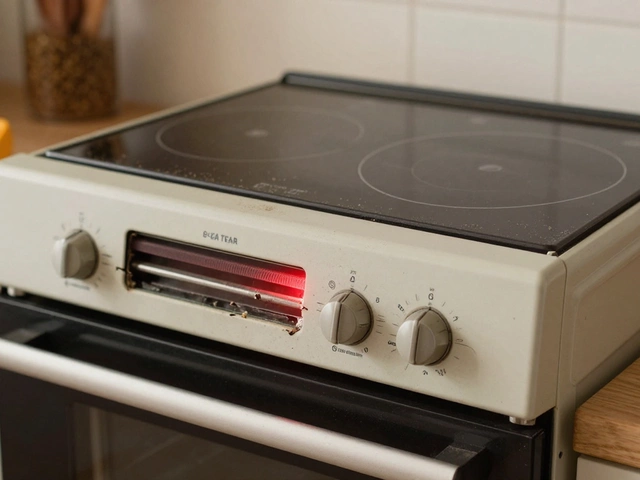So, you've got a bathroom extractor fan making a weird noise or just isn't doing its job? Don't worry; you're not alone. These fans are workhorses for keeping our bathrooms fresh and dry, but sometimes they need a bit of TLC.
First, let's chat about why you should care. A well-maintained fan helps prevent mold and improves air quality by whisking away moisture and odors. Plus, it can save you money by boosting the lifespan of your fan. Not too shabby for a simple clean-up job, right?
Before diving in, arm yourself with a few essentials: a screwdriver, a vacuum with a hose attachment, a damp cloth, and maybe a small brush or toothbrush for the nooks and crannies. Got your gear? Sweet, let's move on to giving that fan the spa treatment it deserves.
- Why Service Your Fan Regularly
- Tools You Need
- Step-by-Step Cleaning Guide
- Common Issues and Fixes
- When to Replace Your Fan
Why Service Your Fan Regularly
Ever wondered why your bathroom fan service is so crucial? It's not just about keeping things smelling fresh. These fans play a key role in protecting your home from moisture build-up that can lead to serious problems.
Extractor fans whisk away moisture-laden air that builds up during a shower or bath. When this moisture isn't vented properly, it can lead to the development of mold and mildew, which are not only unsightly but can also be harmful to your health. Regular fan cleaning helps maintain good air quality, keeping your bathroom environment healthy.
Enhance Fan Efficiency
A regular check-up makes sure your fan is running at top efficiency. Over time, dust and grime can gunk up the works, slowing down fan performance and causing the motor to work harder than it needs to. This can jack up your electric bill—not exactly ideal, huh?
Extend the Lifespan
Want to save on costly replacements? Routine cleaning and servicing can extend the lifespan of your fan. A little maintenance goes a long way in preventing burnout or mechanical failures.
| Common Issues | Impact Without Maintenance |
|---|---|
| Noisy fan operation | Indicates wear and inefficiency |
| Poor air circulation | Leads to humidity and mold |
| Motor burnout | Results in expensive repairs |
In a nutshell, regular home maintenance of your extractor fan is a simple, cost-effective way to keep your bathroom in top shape. Skip the service, and you might find yourself dealing with bigger issues down the line. So grab that screwdriver and vacuum—it’s time to give some love to those hard-working fans!
Tools You Need
Getting started with servicing your bathroom extractor fan is easier than you might think. You don't need a professional toolkit for this simple home maintenance task. Instead, just gather a few basic household items.
Essential Tools
- Screwdriver: Most fan covers are held in place by screws that can be easily removed with a Phillips screwdriver.
- Vacuum with hose attachment: This will help you suck up any loose dust and debris that's accumulated inside the fan.
- Damp cloth: Ideal for wiping down the fan blades and cover. Make sure it's just damp, not soaking wet, to avoid any water getting where it shouldn't.
- Small brush or toothbrush: These are perfect for those hard-to-reach spots. An old toothbrush can work wonders on the fan's nooks and crannies.
Optional Extras
While the above tools should be enough for a basic clean, here are a couple of extras that might make the job easier:
- Compressed air can: Useful for blowing out stubborn dust from tight spots.
- Microfiber cloth: Great for a more thorough dusting without leaving lint behind.
Equipped with these tools, you'll be ready to tackle even the most stubborn grime and dust, keeping your bathroom fan running smoothly and efficiently. Remember, a little time spent on maintenance can prevent bigger headaches down the road!

Step-by-Step Cleaning Guide
Ready to roll up your sleeves? Cleaning your bathroom extractor fan might sound daunting, but it's actually pretty straightforward. Follow these steps, and your fan will be humming smoothly in no time.
1. Power Off Safety
Before you do anything else, switch off the power supply to the fan. This is crucial to avoid any electrical mishaps. Better safe than sorry, right?
2. Remove the Cover
Using a screwdriver, carefully remove the fan's cover or grill. They're usually held in place by a couple of screws. Save those screws somewhere safe, so they don't pull a vanishing act.
3. Vacuum Away Dust
Dust loves to hang out on your fan, reducing its efficiency. Break out that vacuum cleaner with the hose attachment and suck away all that fluffy stuff. It's oddly satisfying, trust me.
4. Wipe Down Components
Grab a damp cloth and wipe the blades and housing gently. If there's stubborn gunk, a small brush or toothbrush can help get into those hard-to-reach spots. Just don't scrub like you're removing old wallpaper.
5. Clean the Fan Cover
Your fan cover doesn't want to feel left out. Give it a good clean with soap and water, making sure to rinse and dry before popping it back on.
6. Reassemble and Test
Once everything's spick and span, reattach the cover with those screws you kept safe (you did, right?). Switch the power back on and test out your now-sparkling fan. Hear that? The sweet sound of efficiency!
By making this an annual routine, you'll keep that fan in prime condition, extending its lifespan and keeping your bathroom free from mold and mildew. Now that's a win-win!
Common Issues and Fixes
Even the most reliable extractor fan can run into issues. The good news? Most problems are pretty straightforward to tackle.
Issue 1: Fan Not Turning On
If your bathroom fan refuses to turn on, start by checking the basics. Is it plugged in properly? Sometimes a loose connection or tripped circuit can be the culprit. Make sure the switch is functioning and there is power to the unit.
- Check Wiring: Turn off the power and inspect the wiring connections. Tighten any loose wires.
- Inspect the Fuse: Replace a blown fuse in the circuit box if necessary.
Issue 2: Fan is Noisy
A noisy fan can be annoying. Often, it’s because some debris has found its way into the fan. Other times, parts might need some lubrication.
- Clean the Blades: Dust and grime can cause the fan to make odd noises. Use a soft brush and vacuum to clear out dirt.
- Lubricate: A few drops of machine oil on moving parts can quiet things down.
Issue 3: Poor Airflow
If your fan isn’t moving enough air, this might be why.
- Clear the Obstructions: Ensure nothing is blocking the exhaust outlet. Sometimes, bird nests or leaves can cause problems.
- Filter Clean-Up: Some fans have removable filters that can collect dust. Give them a good rinse.
| Common Issue | Possible Fix |
|---|---|
| Fan Not Turning On | Check wiring and fuse |
| Fan is Noisy | Clean blades and lubricate parts |
| Poor Airflow | Clear obstructions, clean filters |
If you’ve tried these fixes and the fan still acts up, it might be time to call in a professional or consider replacing the fan altogether.

When to Replace Your Fan
Even the hardiest bathroom extractor fan has its limits. But how do you know when it's time to ditch the old and bring in the new? Let’s figure it out.
Strange Noises
If your fan sounds like it's trying to take off, it might be nearing the end of its life. Grinding, rattling, or humming, louder than usual, can mean the motor is wearing out. Imagine trying to run a marathon with a broken ankle—not ideal! So, if cleaning and lubricating doesn’t help, it’s probably time for a replacement.
Poor Performance
Notice swirling steam and a bathroom that’s as muggy as a sauna? Your fan should suck out all that humidity. If it's moving air around more like a lazy ceiling fan, it’s time to start shopping for a new one. Blockage or dirt could be to blame, but if a deep clean doesn’t do the trick, consider it a lost cause.
Age
If your bathroom fan’s old enough to vote, it’s high time to replace it. Most fans have a lifespan of about 10 years. Older models, especially, might not be as energy-efficient, meaning they’re costing you more in electricity bills. Cha-ching!
Frequent Repairs
If you feel like you’re spending more time repairing than enjoying a shower, it’s a sign. Constantly fixing parts or calling the repair guy racks up costs that could be spent on a new, better model.
| Fan Age (Years) | Efficiency |
|---|---|
| 0-5 | High |
| 5-10 | Moderate |
| 10+ | Low |
Keep an eye out for these tell-tale signs. When your extractor fan is no longer up to the task, replacing it ensures your bathroom stays fresh and mold-free. It could even lead to noticing those steamy bathroom mirrors in other folks’ homes and not yours!





